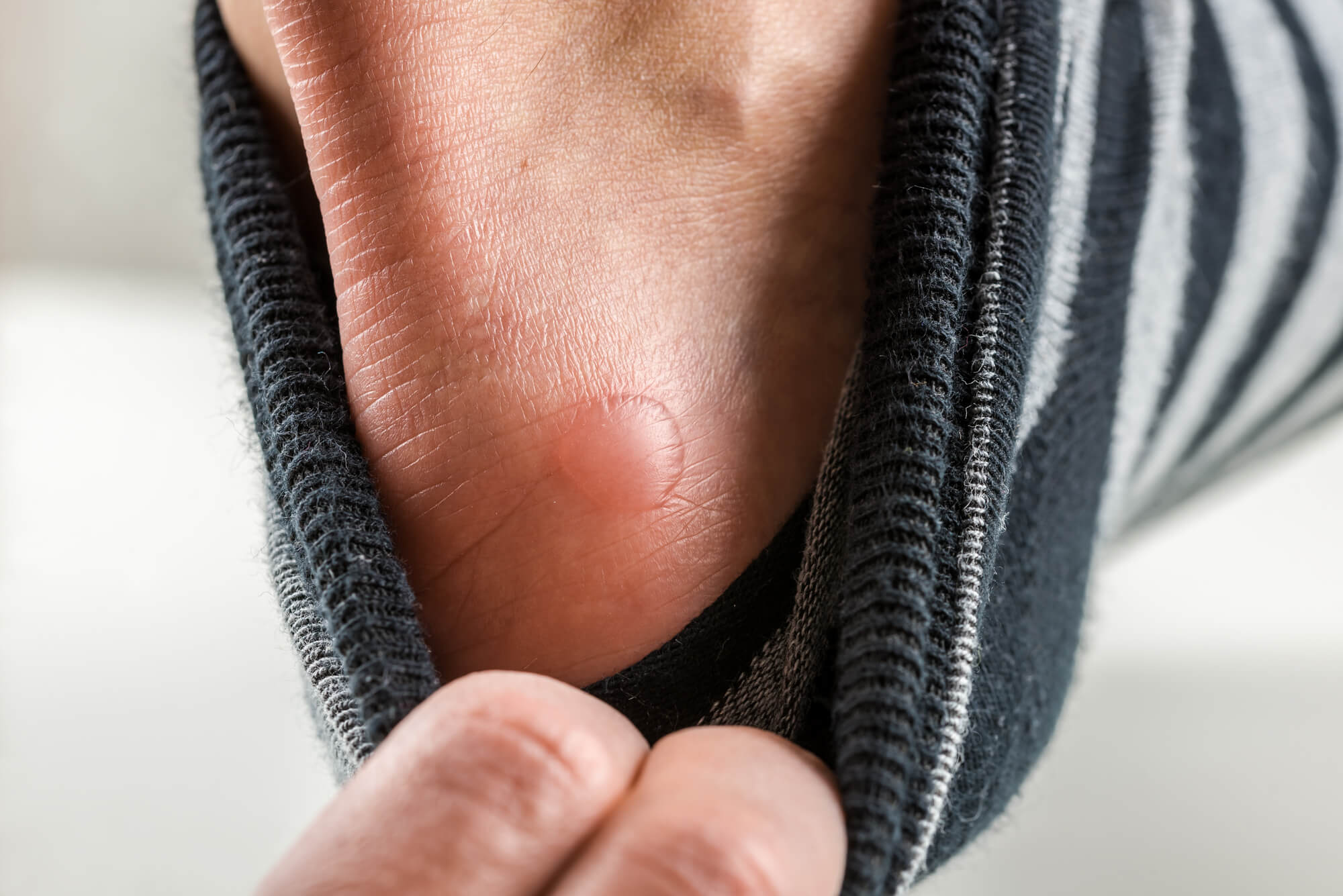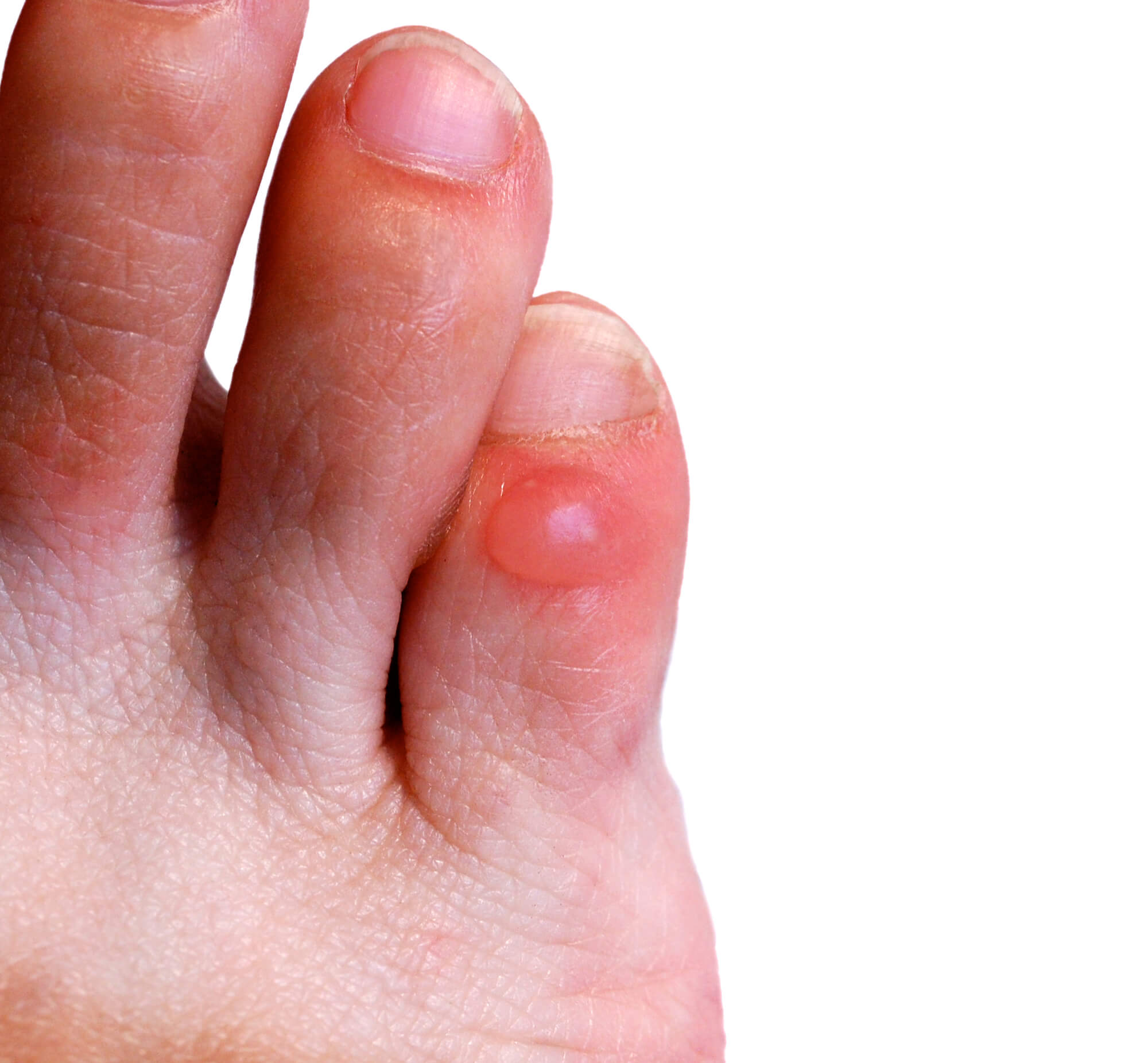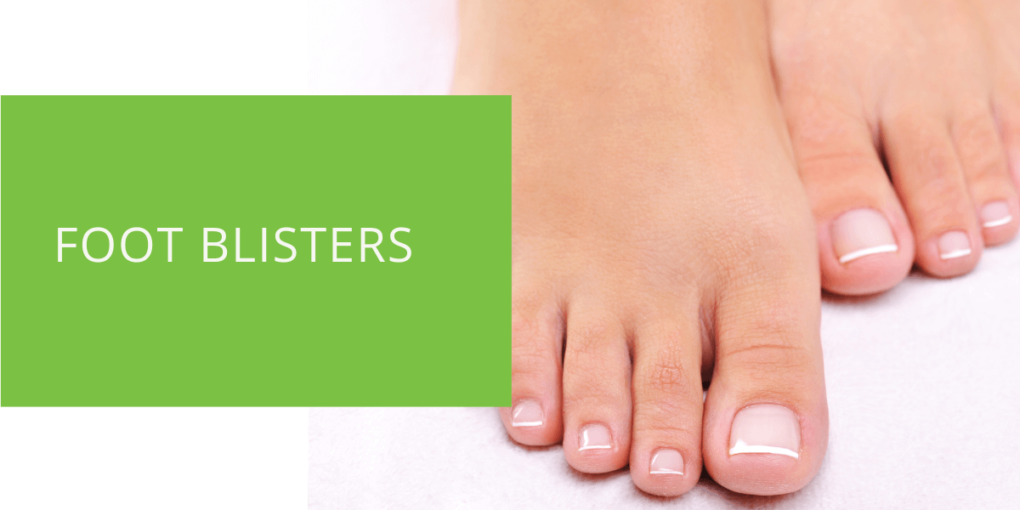Everything You Need to Know About Foot Blisters
Foot blisters are a common ailment that can cause discomfort and inconvenience for those who experience them. While they may seem minor, foot blisters can be painful and even interfere with daily activities. In this article, we'll explore everything you need to know about foot blisters, including what causes them, how to prevent them, and how to treat them properly. We'll also discuss when it's necessary to see a podiatrist for foot blisters and provide tips on choosing the right footwear to reduce the risk of blisters.
What are Foot Blisters?
A foot blister is a small pocket of fluid that forms on the skin due to friction or other irritation. Blisters can appear on any part of the foot, but they are most common on the heels, toes, and soles. Foot blisters are usually filled with clear fluid but may also contain pus if infected.
Causes
Several things can cause blisters on the feet, including:
- Friction: One of the most common causes of foot blisters is friction. This can occur when your shoes don't fit properly or when you are engaging in activities that put a lot of pressure on your feet, such as running or hiking.
- Eczema: Foot blisters can also be caused by eczema, which causes the skin to be inflamed and itchy.
- Contact dermatitis: Foot blisters may also be caused by contact dermatitis, which is a reaction to an allergen or irritant that comes into contact with the skin.
- Insect bite: An insect bite can also cause a foot blister.
- Sunburn: If your feet get sunburned, blisters may appear.

Symptoms of Foot Blisters
Appearance
Foot blisters are usually small, round, and fluid-filled. They may be red, pink, or skin-colored and appear alone or in clusters. Blisters may be raised or flat, and they may be surrounded by red, inflamed skin.
Pain
Foot blisters can be quite painful, especially if they are located in a place where they are constantly being rubbed or pressed against. Blisters may also be painful to the touch.
Preventing Foot Blisters
Choose the Right Footwear
One of the best ways to prevent foot blisters is to choose the right footwear. Shoes that are too tight or too loose can cause friction on the skin, which can lead to blisters. Try on shoes before buying them to ensure that they fit properly and provide enough room for your toes.
Wear Socks to Reduce Friction
Wearing socks can also help to prevent blisters by reducing friction on the skin. Socks that are made of moisture-wicking material can help to keep your feet dry, which can also reduce the risk of blisters.
Break In New Shoes Slowly
If you have just purchased a new pair of shoes, breaking them in slowly is important. Wear them for short periods, gradually increasing your time in them. This will allow your feet to adjust to the new shoes and reduce the risk of blisters.
Keep Feet Dry and Cool
Blisters are more likely to form on sweaty or hot feet, so keeping your feet dry and cool is important. Avoid wearing shoes made of materials that don't allow your feet to breathe, and try to avoid wearing shoes in hot or humid conditions if possible. If your feet get sweaty, change your socks and allow your feet to air out as soon as possible.

Treating Foot Blisters
Leave the Blister Alone if Possible
If you have a blister on your foot, it's usually best to leave it alone. The blister will eventually burst, and the fluid will drain. Leaving the blister intact will also help to protect the underlying skin from infection.
Drain the Blister if Necessary
However, if the blister is very large or painful, you may need to drain it. To drain a blister, use a sterilized needle or pin to puncture the blister carefully. Make sure to clean the area with soap and water before puncturing the blister. Then, gently press on the blister to allow the fluid to drain out. Once the blister has been drained, cover it with a bandage to protect the skin.
Cover the Blister with a Bandage
After you have drained a blister, it's important to cover it with a bandage to protect the skin. Bandages can help to reduce friction on the blister, which can help to prevent further irritation. If the blister is in an area prone to rubbing, you may want to use a blister pad or a special blister bandage to provide extra cushioning.

When to See a Doctor
Severe Pain
If you have a foot blister causing severe pain, you should see a doctor. A doctor can help determine the blister's cause and provide treatment to reduce the pain.
Large or Deep Blisters
If you have a large or deep blister on your foot, it's also a good idea to see a doctor. Large or deep blisters are more likely to become infected, and a doctor can help to ensure that the blister is properly treated to prevent infection.
Conclusion
Foot blisters can be painful and inconvenient, but they are usually not serious. You can keep your feet healthy and comfortable by taking steps to prevent blisters and properly treating them when they occur. If you have persistent or severe foot blisters, you should see a podiatrist for further evaluation and treatment.
Remember to choose the right footwear, wear socks to reduce friction, break in new shoes slowly, and keep your feet dry and cool to reduce your chances of developing blisters. You can minimize the risk of foot blisters with proper foot care and keep your feet feeling their best.
FAQ
What is the best thing to do for blisters on feet?
If you have a blister on your foot, it's usually best to leave it alone. The blister will eventually burst, and the fluid will drain. Leaving the blister intact will also help to protect the underlying skin from infection. If the blister is very large or painful, you may need to drain it by carefully puncturing it with a sterilized needle or pin and then covering it with a bandage to reduce friction and protect the skin.
When should I be concerned about a foot blister?
You should be concerned about a foot blister if it is causing severe pain or is large or deep. These blisters may signify a more serious condition, and it's a good idea to see a doctor for further evaluation and treatment.
How long do feet blisters last?
The length of time that a foot blister lasts will depend on the cause of the blister and how it is treated. Some blisters may resolve on their own within a few days, while others may take longer to heal. In general, it's important to protect the blister and allow it to heal properly to prevent infection and promote healing.
Should you walk on a foot with a blister?
It's generally best to avoid walking on a foot with a blister if possible. Walking can cause friction on the blister, leading to further irritation and pain. If you need to walk, try to minimize the pressure you put on the blister by using crutches or a walking boot if possible.
Can you wear shoes with a blister?
It's generally best to avoid wearing shoes if you have a blister on your foot. Shoes can cause friction on the blister, leading to further irritation and pain. If you need to wear shoes, try to choose a pair that is comfortable and fits well to minimize the risk of friction on the blister. You may also want to use a blister pad or a special blister bandage to provide extra cushioning.

